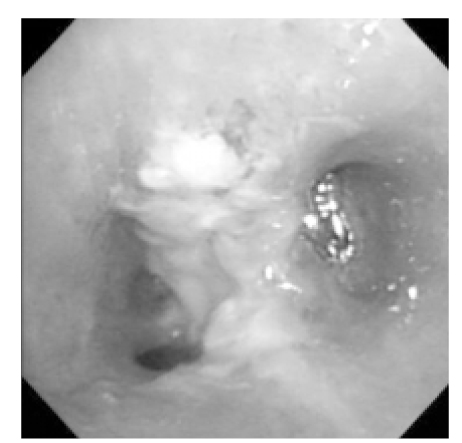J Korean Med Assoc.
2004 Oct;47(10):973-980. 10.5124/jkma.2004.47.10.973.
Diagnosis and Treatment of Cough
- Affiliations
-
- 1Department of Internal Medicine, Chonnam Natinal University College of Medicine, Hwasun Hospital, Korea. kyc0923@jnu.ac.kr
- KMID: 2183535
- DOI: http://doi.org/10.5124/jkma.2004.47.10.973
Abstract
- Cough remains the most common reason for patients to seek medical attention. Although the exact prevalence is difficult to estimate, recurrent cough is reported in up to 40% of the population. For the investigation and treatment of chronic cough, it is important to understand its etiology, particularly when the underlying pathology exists outside the respiratory tract. Although there is no consensus as to the best diagnostic strategy for chronic cough, many protocols combine laboratory investigations with empirical trials of treatment. Specific treatment for the underlying disease of cough along with etiologic diagnosis should be emphasized rather than nonspecific antitussive therapy because nonspecific pharmacologic treatments have changed little during the last 50 years, without any significant advances from opiatebased compounds. Recently, molecular structures of cough receptors and mediators have been identified. Vanilloid receptor-1 is one of ion channel receptors expressed on the sensory neurons of cough reflex. Substances inhibiting ion channels and receptor antagonists of tachy-or bradykinins are being investigated. Thus safer and more effective agents to deal with this common problem are believed to be available in the near future.
Keyword
MeSH Terms
Figure
Reference
-
4. Irwin RS, Madison JM. The diagnosis and treatment of cough. New Engl J Med. 2000. 343:1715–1721.
Article5. Morice AH, Kastelik JA. Cough 1: Chronic cough in adults. Thorax. 2003. 58:901–907.9. McGarvey LP. Cough 6: Which investigations are most useful in the diagnosis of chronic cough. Thorax. 2004. 59:342–346.
Article10. GINA Executive Committee. National Institutes of Health, National Heart, Lung, and Blood Institute. Global strategy for asthma management and prevention. 2002.11. Gibson PG, Dolovich J, Denburg J, Rmasdale H, Hargreave F. Chronic cough: eosinophilic bronchitis without asthma. Lancet. 1989. 17:1346–1348.
Article13. Fontana GA, Pistolesi M. Cough 3: chronic cough and gastro-oesophageal reflux. Thorax. 2003. 58:1092–1095.14. Mukae S, Itoh S, Aoki S, Iwata T, Nishio K, Katagiri T, et al. Association of polymorphisms of the renin-angiotensin system and bradykinin B2 receptor with ACE-inhibitor-related cough. J Hum Hypertens. 2002. 16:857–863.
Article15. De Jongste JC, Schields MD. Cough 2: Chronic cough in children. Thorax. 2003. 58:998–1003.16. Morice AH, Geppetti P. Cough 5: The type 1 vanilloid receptor: a sensory receptor for cough. Thorax. 2004. 59:257–258.
Article17. Trevisani M, Milan A, Gatti R, Zanasi A, Harrison S, Geppetti P, et al. Antitussive activity of iodo-resiniferatoxin in guinea pigs. Thorax. 2004. 59:769–772.
Article18. Belvisi MG, Geppetti P. Cough 7: Current and future drugs for the treatment of chronic cough. Thorax. 2004. 59:438–440.
Article


